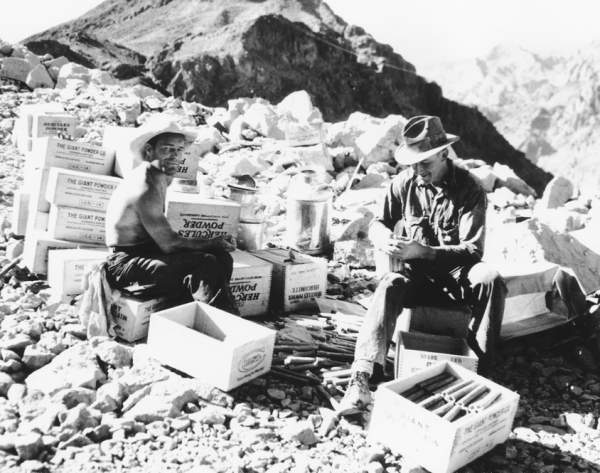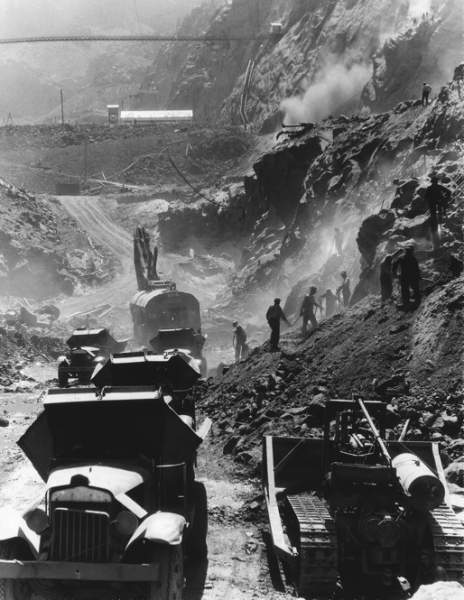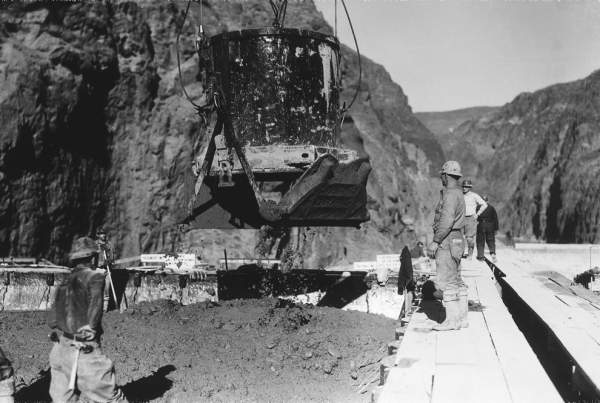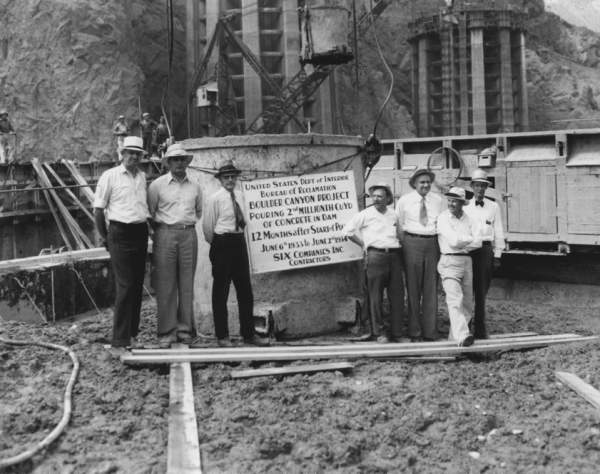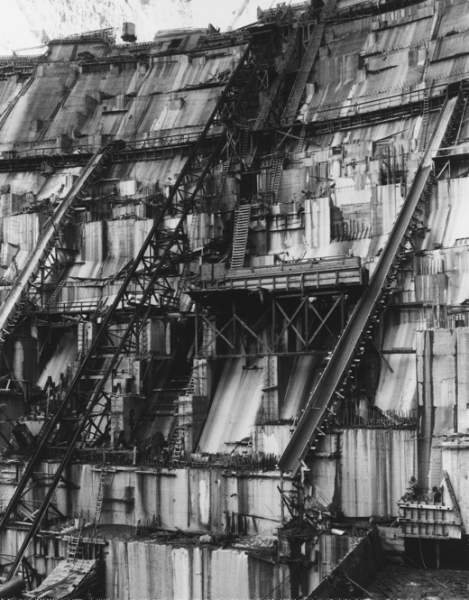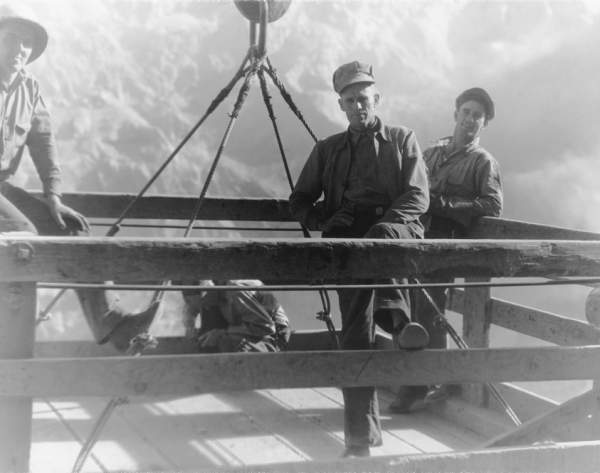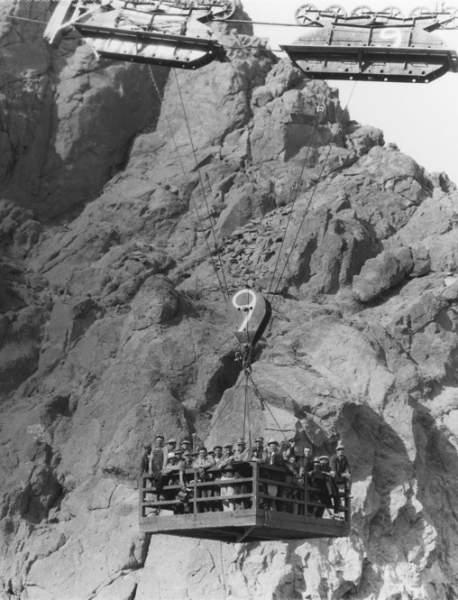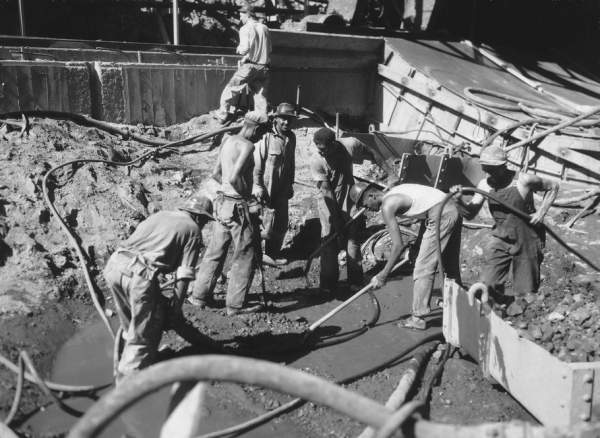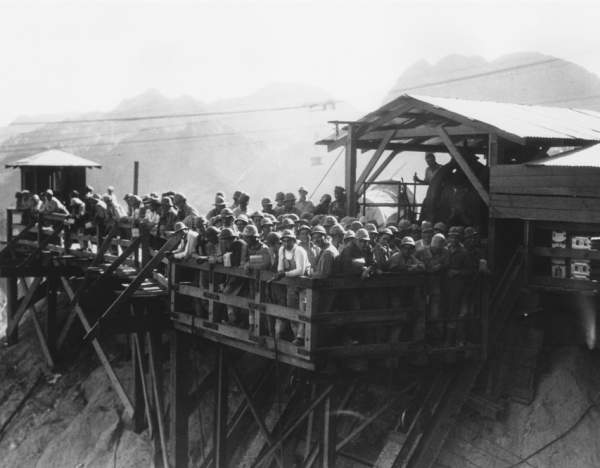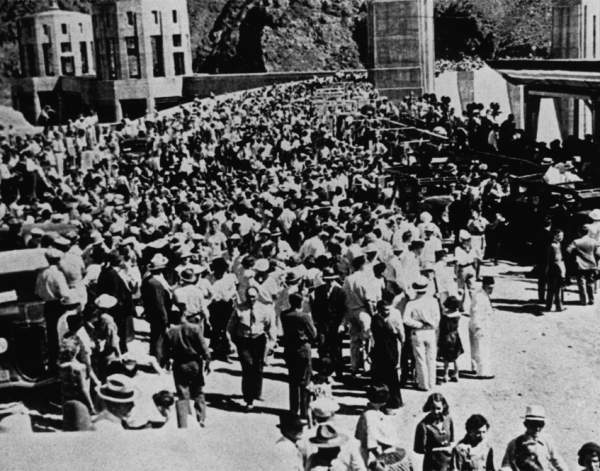‘Great feat of mankind’ reshaped region
On the day of Hoover Dam's dedication, 75 years ago this week, President Franklin D. Roosevelt heralded it as a "great feat of mankind" destined to reshape "the geography of a whole region."
Nowhere was that transformation more dramatic than in Southern Nevada.
Consider this: On Sept. 30, 1935, some 10,000 people gathered on top of the dam to hear Roosevelt speak. The Las Vegas of that day was home to fewer than 9,000 people.
Now Las Vegas anchors a metropolitan area of nearly 2 million residents and fuels the economic engine for the entire state. It has grown into one of the world's top destinations -- a city that welcomes more than 36 million visitors, even in a down year.
Without Hoover Dam, you can forget all of that.
"There wouldn't be a Las Vegas. Las Vegas wouldn't exist," said Pat Mulroy, general manager of the Southern Nevada Water Authority.
Mulroy's agency is responsible for the valley's water supply, 90 percent of which now comes from the Colorado River by way of Lake Mead, still the largest man-made reservoir in the United States.
It was the promise of that water -- and then the large-scale delivery of it starting in 1971 -- that allowed the valley to grow, Mulroy said.
Until then, the community survived exclusively on the aquifer beneath it, which residents were busily pumping into oblivion.
By Mulroy's math, Las Vegas outgrew what groundwater could sustainably support sometime in the late 1940s, when the valley was home to fewer than 25,000 people.
The dam freed the Las Vegas Valley from the limits of its environment, and it had a similar effect on the rest of the region.
Today, an estimated 27 million people in the United States and Mexico depend on the Colorado River for drinking water, electricity and irrigation.
A river that once shrank to a shallow stream during severe dry spells now runs reliably to taps in Los Angeles, San Diego, Phoenix and Tucson, four of the nation's fastest growing cities of the last 30 years.
A river that once raged with damaging floods powerful enough to refill California's ancient, inland Salton Sea now supplies a nation with vegetables grown in the dead of winter in the continent's harshest desert.
"Everything south of Hoover is possible because of Hoover," Mulroy said.
Without it, she said, "there wouldn't be a modern West."
The U.S. Bureau of Reclamation will mark the 75th anniversary of Hoover Dam on Thursday with a re-creation of the dedication ceremony.
The event will be noteworthy for who won't be there.
Past anniversaries have drawn some of the original workers back to the dam, but those men are gone now.
"I can't think there is anyone left anywhere who worked on the dam," said Dennis McBride, curator of collections and history for the Nevada State Museum in Las Vegas.
In the mid-1980s, McBride recorded the oral histories of several dozen workers and their wives.
"Those are stories that are gone now because all those people are dead," McBride said. "All of them are dead."
The legacy they left is now in the hands of current workers at the dam. It's a responsibility they take seriously, said Ken Rice, area manager for Hoover and the other federal dams along the lower Colorado.
"This is the one dam within Reclamation that's truly known around the world," he said. "People here take pride and ownership in it."
And in case they forget, reminders of the past are everywhere.
On the wall near the desk of facility manager Pete DiDonato is an old control panel used during World War II to black out the dam's floodlights. It was installed in anticipation of an air raid that never came.
"You're surrounded by history at every turn," DiDonato said. "I'm just proud to be a steward of this place."
What gets Terry Warner are the concrete walls. In places, you can still see the faint outlines from the plywood forms and the nails that were used to hold them in place. The maintenance director said he can't look at something like that without thinking about the men who drove those nails and designed those walls.
"These people were amazing," he said. "They didn't have calculators and BlackBerries. They did it all with slide rules and long-hand math."
Then there are the artistic flourishes, many of them in places the public rarely gets to see: decorative doors made from aluminum, brass and copper; intricate Terrazzo tile floors in empty passageways; art deco-style panels on generator control boxes.
It's not just functional, Warner said, "It's pretty."
In January, Warner will complete his 37th year at Hoover Dam, making him one of the longest serving employees in the facility's history.
He was 22 years old when he was hired as an engineering draftsman in January 1974. At the time, he had never so much as driven over the dam. Now he has seen every inch of it several times over.
You know that old turbine water wheel in the park below the Bureau of Reclamation's office in Boulder City? It's a 14-foot diameter disc of cast steel that weighs as much as a Sherman tank. And for almost 40 years it powered a generator inside the dam. Warner helped remove the water wheel during an upgrade in 1982.
"It actually had my initials (painted) on it for a while," he said of what is now a rusting museum piece. "My wife made some comment to me (recently) about me being a relic too."
To visualize Hoover Dam's true impact on Southern Nevada, try wiping it all away.
Without the massive, four-year construction project and the thousands of jobs it created, there would be no Boulder City. The current home of that once-government town would remain, in Roosevelt's words, a "cactus-covered waste."
Without the 6.6 million-ton concrete plug in Black Canyon and the lake that backs up behind it, there would be no Henderson. After all, Nevada's second largest city began as a factory town, built to support World War II chemical production that was itself made possible by cheap power from the dam and water piped in from Lake Mead.
"They wouldn't have had a water supply for it," Mulroy said.
And without the curved wall of Hoover Dam -- 726 feet high and 1,244 feet long -- spanning the canyon, U.S. Highway 93 likely never would have been built where it is today. Motorists would have to cross the Colorado River at Laughlin, and the world would be robbed of another engineering marvel, the soon-to-open Hoover Dam bypass bridge.
Predicting what might have become of Las Vegas is a trickier proposition.
Former state Archivist Guy Rocha believes the city would have developed even without Hoover Dam, but maybe only to about half its current size or less. Reno might still be Nevada's largest city.
"It's going to have gambling. It's going to have quickie weddings and the fast divorce. People are still going to want to come to Las Vegas," Rocha said. "The question is, how big is it going to grow and how fast is it going to grow?"
Water and power would be the limiting factors, he said. "You just couldn't sustain that many people and all their air-conditioning units."
The city might look today as it did before 1989, when The Mirage opened and the era of the megaresort began.
Instead, Las Vegas Boulevard might still be populated with campy motels -- think Glass Pool Inn -- and what Rocha called "sawdust joints," basically old saloons with casinos in them.
Or perhaps the absence of the dam and Lake Mead would have accelerated the controversial push -- now being shepherded by Mulroy's agency -- to pipe groundwater south from Lincoln and White Pine counties, Rocha said.
Of course, such a project almost certainly would have met with greater resistance in a Nevada where Reno still was the largest city and the north still its center of influence.
"Hoover Dam has been critical to the Las Vegas we know today, there's no doubt," Rocha said. "It not being there is just unimaginable."
Today, Hoover Dam stands sentinel over a Colorado River weakened by the longest and deepest drought in more than 75 years.
Drive across the crest of the dam, and the scale of the problem is obvious. It is written in the white bathtub ring on the upstream canyon wall, marking a 120-foot drop in Lake Mead since 1999.
Water forecasters expect the reservoir to fall another 3 feet in October to a level unseen since 1937, when the lake was being filled for the first time.
If that is followed by another dry winter in the Rockies, federal officials could declare a shortage on the Colorado, an unprecedented move that would cut Nevada's river share by about 6 percent and test the new agreements and new spirit of cooperation among the basin states.
Already, the falling water level has begun to reduce the efficiency of power generation at the dam.
Add the growing specter of climate change, and the future seems bleak for large-scale water storage and delivery on the Colorado River.
But this is supposed to be a birthday party, right? So, in honor of Hoover Dam's 75th anniversary, Warner prefers to take the optimistic view: The reservoir isn't more than half empty; it's less than half full.
"Over my career, I've seen the lake fill and spill and go back down again," Warner said. "I tell people it's a natural cycle and we're just in a dry spell.
"Hopefully it will come back up."
Contact Henry Brean at hbrean@reviewjournal.com or 702-383-0350. Follow @RefriedBrean on Twitter.
HOOVER DAM 75th Anniversary INTERACTIVE VIDEOS SLIDE SHOWS The U.S. Bureau of Reclamation will mark the 75th anniversary of Hoover Dam with a re-creation of the dedication ceremony on Thursday and discounted tour rates and other promotions throughout the weekend.






